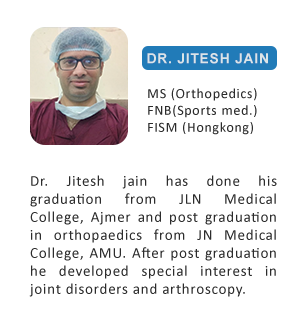Why ACL Surgery Fails: Understand the Causes
ACL reconstruction surgery can fail due to several reasons, including surgical errors, graft issues, re-injury, or missed associated injuries. Understanding these causes helps in both prevention and better outcomes.
1. Technical Errors During Surgery
These are the most common reasons for failure, especially within the first 6 months post-op. That's why surgery should be done by a trained and experienced sports injury specialist.
Common Surgical Mistakes:
- Malpositioned Tunnels: During ACL reconstruction, the graft is secured through femoral and tibial tunnels using devices like screws and buttons. If these tunnels are not properly aligned anatomically, the graft may impinge on joint walls, leading to failure.
- Inadequate Fixation: The graft must be tightly fixed. Improper use of fixation devices (screws, endobuttons) may cause the graft to loosen or fail over time.
2. Graft-Related Issues
- Graft Thickness: A graft should be at least 9mm thick. Thinner grafts are more prone to rupture under stress.
- New Trauma: Re-injury to the knee, especially in high-impact or contact sports, can tear the newly reconstructed ligament.
- High-Risk Activities: Activities that involve pivoting, jumping, or rapid direction changes can put excessive strain on the graft.
3. Unaddressed Concomitant Injuries
If associated issues like meniscal tears, cartilage damage, or additional ligament injuries are not addressed during ACL surgery, the new graft undergoes undue stress and may fail.
4. Patient-Specific Risk Factors
- Age: Younger, highly active individuals are statistically at a higher risk of re-injury.
- Posterior Tibial Slope: An increased slope can lead to more forward tibial movement, stressing the graft.
- Obesity: Excess weight increases joint stress and reduces post-surgical outcomes.
- Smoking: Impairs healing and increases risk of complications.
- Systemic Illnesses: Conditions like diabetes can slow healing and graft incorporation.
5. Other Contributing Factors
- Infection: Any infection at the surgical site can compromise graft health and lead to failure.
- Lack of Rehabilitation: Inadequate physiotherapy or poor adherence to the post-op rehab plan can cause stiffness, weakness, and graft failure.
Final Thoughts
ACL reconstruction has a high success rate, but it requires a technically precise surgery, proper post-op care, and patient compliance. Knowing the risk factors and following through with a structured rehab plan is key to a successful recovery.
ABOUT THE AUTHOR

TESTIMONIAL

मेरा दाए पैर में चोट लगने के कारण टेढ़ा हो गया था जिसकी वजह से मुझे चलने में भी परेशानी हो रही थी. डॉ जितेश ने ऑपरेशन कर के इसे सीधा किया. में बिलकुल ठीक हूँ .

मेरी बेटी के घुटने में इन्फेक्शन होने के कारण वो दर्द की वजह से सो भी नहीं पाती थी. डॉ जितेश ने ऑपरेशन कर के इसे ठीक किया. बहुत धन्यवाद।

I remember that Dr. Jain came out from his clinic to see my mother because my mother was not able walk a single step. He did total knee replacement on both side and now my mother is walking without aid.
OPENING HOURS
| Monday – Friday | 17:00 – 20:00 |
| Sunday | OFF |
